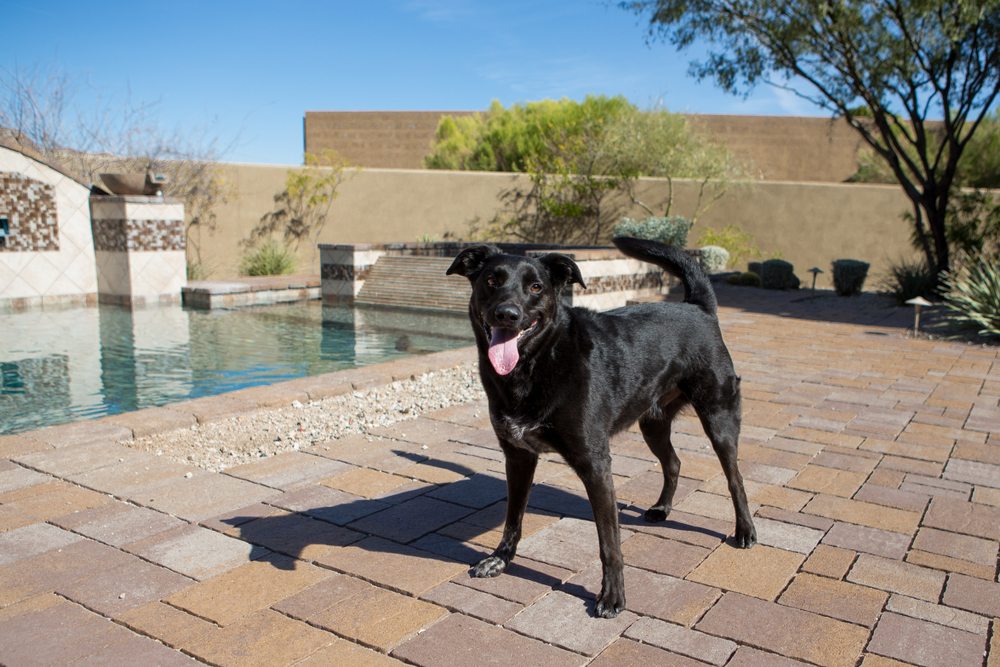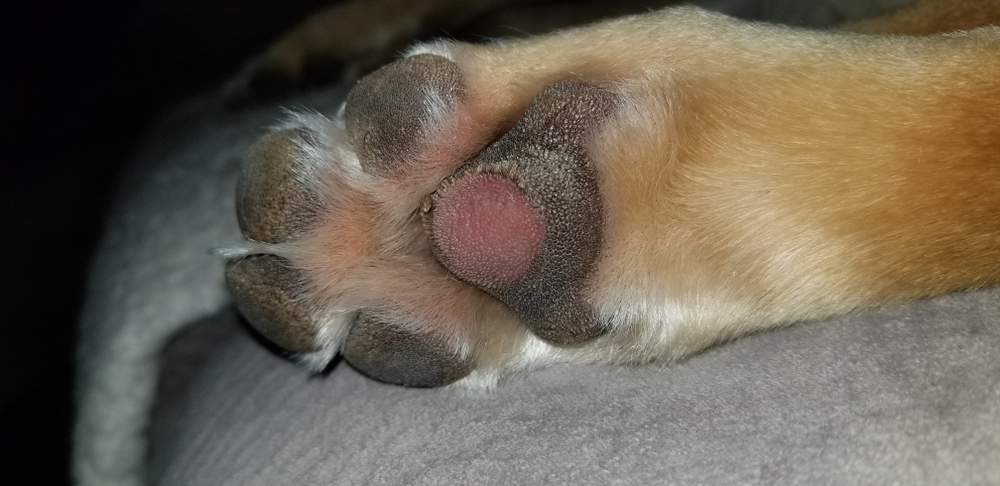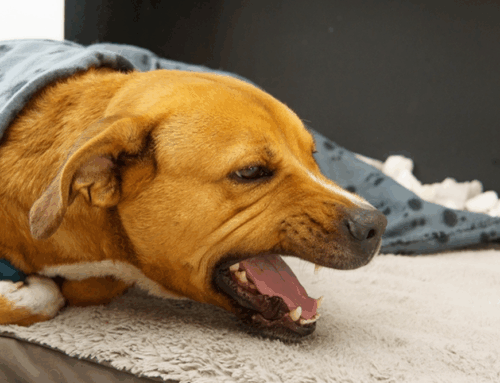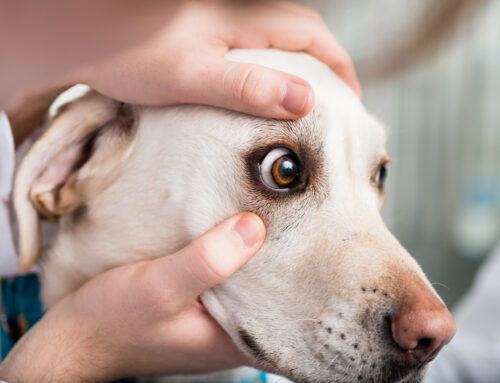Arizona’s hot summer days can be dangerous for your pet. Temperatures can skyrocket well above three-digit figures, and the sun’s UV rays can reach extreme 11-plus levels. Our Southern Arizona Veterinary Specialty & Emergency Center team doesn’t want you or your pet to sweat, so we provide information that will help keep your pet safe from the high temperatures and the sun’s scorching rays.
Your pet is susceptible to heatstroke
While pets can sweat, they have only a few sweat glands in their ears and foot pads, and they don’t rely on sweating as their primary means of heat dissipation. When your pet pants, air circulates over their tongue and mucous membranes, and cooling occurs as water evaporates from these surfaces. Panting is an inefficient body cooling method and is not always sufficient to cool your pet on a hot Arizona summer day, making them susceptible to heatstroke. Overheating is a concern for all pets, but those at increased risk include brachycephalic breeds (e.g., pugs, bulldogs,French bulldogs, boxers, Persian cats), obese pets, senior pets, and pets who have a medical condition, such as a heart problem or respiratory disease.
Your pet’s normal temperature is 101 to 102.5 degrees, and they are at risk for heatstroke if their temperature is higher than the normal range. Heatstroke is considered a veterinary emergency, because systems throughout the body are impacted. The heart’s initial response to heat is to increase heart rate in an attempt to push blood to the body periphery for cooling. However, if body temperatures don’t fall, the heart can no longer effectively pump blood throughout the body. When organs such as the gastrointestinal (GI) tract, kidneys, lungs, and brain aren’t well perfused, they are damaged, which leads to severe complications. The GI lining is compromised, which allows bacteria to enter the bloodstream, the kidneys can’t filter out waste products, fluid accumulates in the lungs, and the brain swells and hemorrhages. In addition, a condition called disseminated intravascular coagulation that leads to life-threatening, body-wide clotting abnormalities can occur.
Early heatstroke signs include decreased activity, excessive panting, bright red mucous membranes, and thick, ropey saliva. As the condition progresses, signs include vomiting, diarrhea, difficulty breathing, seizures, and collapse.
Your pet should never be left in a vehicle
Your car can become a deadly oven in minutes, and you should never leave your pet alone in a vehicle. On a relatively cool day, temperatures can reach triple digits in 20 minutes, and on a hot day, temperatures can reach dangerously high digits in 10 minutes or less. Parking in the shade or leaving your window cracked isn’t enough to keep your pet safe.
Your pet must be kept well-hydrated
Dehydration increases your pet’s heatstroke risk. Tips to ensure your pet remains well-hydrated include:
- Offer multiple sources — Provide multiple fresh water sources throughout your home.
- Clean the water bowls — Clean your pet’s bowl and refresh the water daily to ensure palatable water.
- Monitor your pet’s drinking — Keep an eye on the amount of water your pet drinks, so you know if their intake is adequate. Normal water intake is about 25 to 50 ml/kg/24 hours.
- Monitor your pet’s hydration — Dehydration signs include lethargy, dry nose, dry, sticky mucous membranes, and reduced skin elasticity.
- Provide a water fountain — Cats are especially drawn to running water and may drink more if they have access to a water fountain.
- Carry water — When out and about with your pet, carry bottled water and a portable water bowl, so you can offer them frequent drinks.
Your pet’s paws must be protected
In the summer, asphalt temperatures can reach up to 180 degrees, and pavement burn is a significant danger for pets. The risk increases when outside temperatures surpass 95 degrees, and pavement that is too hot for your bare feet is too hot for your pet’s bare paws. Tips to protect your pet’s paws include:
- Keep your pet indoors — When possible, keep your pet inside and let them enjoy the air conditioning.
- Time your outings well — Limit your pet’s outdoor exercise to early mornings and evenings, when temperatures are typically cooler.
- Choose your route carefully — Choose grass, dirt, or sandy pathways when you walk your pet to protect their paws from hot pavement.
- Consider booties — If you have to walk your pet on pavement, consider buying booties to protect their paws.
Your pet must be protected from sunburn
Hairless pets and those who have short hair coats are at increased sunburn risk. Burned skin is painful and can lead to skin cancer, such as squamous cell carcinoma, malignant melanoma, and hemangioma. In addition, sunburn can exacerbate other skin conditions, such as atopy and food allergic dermatitis. Protect your pet from sunburn by:
- Choosing a pet-safe sunscreen — The product should not contain zinc oxide or para-aminobenzoic acid (PABA), which are toxic to pets. Ensure the sunscreen has a sun protection factor (SPF) of at least 30.
- Applying the sunscreen properly — Test a small spot to ensure your pet doesn’t have an allergic reaction to the product. If not, apply the sunscreen to exposed areas, such as the nose, ear tips, skin around the lips, groin, and inner thighs. Avoid your pet’s eyes, and ensure they don’t lick for about 10 to 15 minutes to allow the sunscreen to absorb.
- Reapplying the sunscreen — Reapply the sunscreen every four to six hours, or after your pet goes swimming.
- Using sun-protective clothing — Your pet can wear sun-protective clothing to help prevent sunburn.
This information should help you protect your pet through Arizona’s hot summer. However, should your pet overheat, contact our Southern Arizona Veterinary Specialty & Emergency Services immediately, so we can ensure they get the care they need.









Leave A Comment